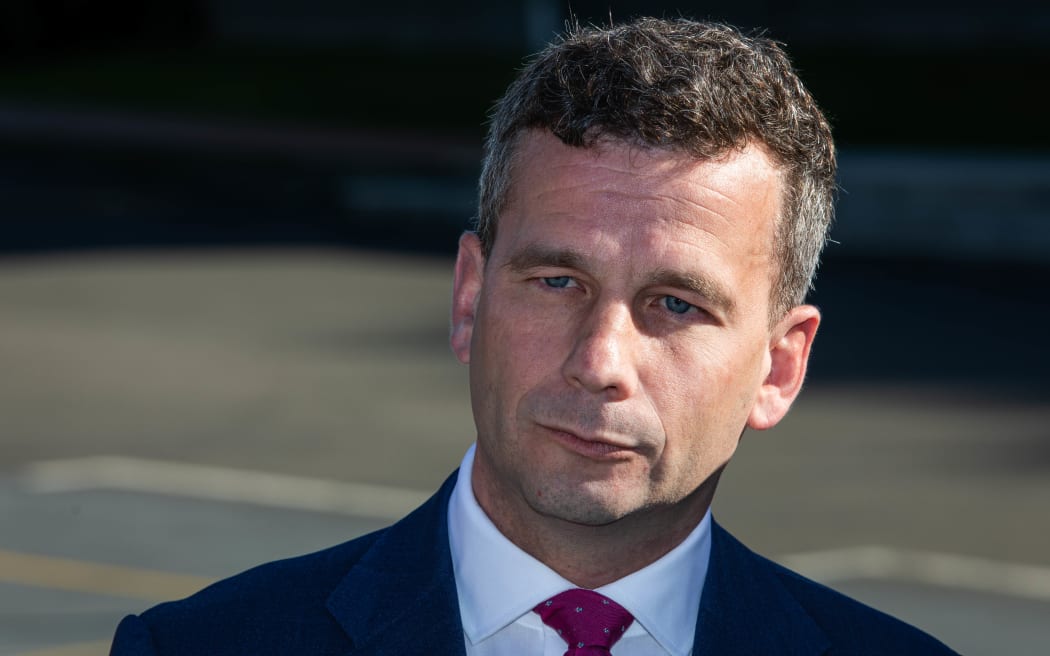Attendance Action Plan Includes Daily Data, Traffic Light System

The government has announced plans for a traffic light system with "clear obligations" for students not attending school, along with increased data reporting.
Other efforts to improve attendance include a public communications campaign, public health guidance about when a student is well enough to attend, and setting attendance as a strategic priority for school boards.
However, some of these moves are not final - with decisions on daily reporting, traffic light system and the strategic priority for school boards not yet taken to Cabinet.
It is all part of the new Attendance Action Plan announced by Associate Education Minister David Seymour this morning.
RNZ earlier reported Seymour intended to publish weekly attendance numbers from the second week of term two.
This was eventually to ramp up to daily reporting to treat school attendance like a crisis - and Seymour's announcement this morning confirmed this would begin from term 1 next year.
Data currently is collated over a school term, but there is a months-long lag between the end of term and the publication of the full data set.
Seymour explained what some of the guidance on sickness would be.
"Something on par with what they have in the UK where they give parents a clear decision tree of: if your kid has this symptom, you need to either keep them home from school, see a doctor, or get more information. Or in some cases it may actually be acceptable to go to school - not every ailment means that you should not attend school."
He said a traffic light system would set out requirements and expectations for parents, schools, and the Ministry of Education at different stages of a student's attendance, with clear obligations for when a student is not attending.
It was likely to have kids attending "regularly" at green, those with some attendance issues at orange and would be dealt with by the school. Those with "persistent non-attendance" would be deemed red - to be dealt with by the Ministry.
He said there would be different approaches to truancy for different reasons behind it.
"Some parents aren't sending their kids to school because they have no money and they're sending their kids out to work. Others aren't sending their kids to school because they do have enough money but they wanted to get a cheaper airfare to Fiji in the last week of term.
"Fining someone with no money probably won't make the boat go faster, but if it's more a case of won't than can't and somebody just doesn't want to live up to the expectation in law that you should send your kid to school whenever possible, that's when a fine is potentially the right thing to do.
"But you'll notice in this whole discussion, that's quite a few steps down the track."
"If the truancy crisis isn't addressed there will be an 80-year long shadow of people who missed out on education when they were young, are less able to work, less able to participate in society, more likely to be on benefits. That's how serious this is," he said.
"Almost every aspect of someone's adult life will be defined by the education they receive as a child. If we want better social outcomes, we can't keep ignoring the truancy crisis. An education crisis today will turn into a crime crisis, a vulnerable children crisis, an economic crisis and an inequality crisis tomorrow."
The action plan was one of the points set out in the government's quarter-two action plan last week.
It's also one of the nine government targets set out by Prime Minister Christopher Luxon on Monday, with the goal of having 80 percent of students present at school for 90 percent of the term.
Seymour pointed to New Zealand's attendance rates having fallen from 69.5 percent in term 2015, to 39.9 percent in term two 2022.
Educators and policy makers have previously pointed to the Covid-19 pandemic as having had a long-term effect on attendance, with sickness one of the reasons for non-attendance, but Seymour pointed to rates in England of 75.1 percent in 2022, 70.3 percent in the United States, and 49.9 percent in Australia.
He said the government would also be using "improved data and analysis to distinguish the drivers of non-attendance and targeting interventions, particularly for the chronic non-attenders or students that are not now enrolled".
Luxon, also at the announcement, said 54 percent of children were not in school with regular attendance, which meant by the time they were 15, they would have lost a year worth of education.
"Attendance is a major problem for us here in New Zealand, the numbers are shameful - there's no other way to describe it," he said.






